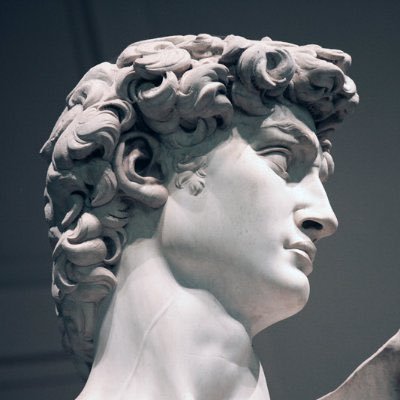“The Closest Thing to Heaven on Earth”

A 1,500-year-old wonder…

Can stones and mosaics communicate divine wisdom? Can a single building showcase thousands of years of spiritual teaching?
In the case of the Hagia Sophia, the answer is yes — and that’s exactly what makes it one of the greatest churches of Eastern Christendom.
From the images portrayed in its mosaics to the very structure of the building itself, the Hagia Sophia incorporates layers of meaning through every level of design.
But first, let’s start with the basics of Byzantine architecture…
Rome Reborn

When Constantine the Great relocated the capital of the Roman Empire to Byzantium (renaming it Constantinople) in 330 AD, he brought Roman architecture with him. In the 6th Century, Emperor Justinian I would draw on those elements to design the greatest Christian church the world had ever seen.
In an example of what would become the Byzantine style of architecture, the Hagia Sophia retained key Roman elements like arches and columns. In contrast to the stripped-down austerity of Roman architecture, though, the Byzantine style grew colorful, complex, and opulent.
The Hagia Sophia exemplified this style: although its bones retain the simplicity of Classical design, its decorations feature intricate carvings, mosaics, high vaulted ceilings, and central domes.

This style of architecture would spread as far east as Moscow and beyond. In the West, it developed into the Romanesque, which itself would later transform into the Gothic style that dominates Europe’s great churches.
The Image of the Invisible
The Hagia Sophia was built to be more than a beautiful church. It was meant to accomplish the impossible: to make Heaven visible on Earth through architecture.
This feat would display all of Byzantium’s skill and wealth, and establish Constantinople as the greatest Christian city in the world. To accomplish this, the architects of the Hagia Sophia drew on the symbolism and visual storytelling of Christian tradition.
For example, the Hagia Sophia makes heavy use of domes and arches. To understand why these features are fundamental to Byzantine church architecture, imagine lying down in the middle of a field and gazing upwards at the sky: the sky always appears to be a dome overhead.

The dome is a powerful reminder of the infinite distance of the sky, which in turn reminds a viewer of Heaven. To bring Heaven to Earth, therefore, Byzantine architects made sure to crown their churches with immense domes. Whenever the faithful gazed up at the lofty ceilings, they were drawn into contemplation of Heaven’s grandeur.
Did it work?
A delegation visiting from Kiev in the 10th century certainly thought so. On entering the church, they “knew not whether they were in Heaven or on Earth”.
Heaven Meets Earth

As a variation on a dome, arches are another key design aspect of Byzantine churches. Not only do they pay homage to the city’s Roman heritage, but their curved top is another abstract symbol of Heaven.
At the same time, the arch’s square bottom indicates the traditional four corners of the Earth, which makes it the perfect architectural feature to describe the union of Earth and Heaven. The perfect place for this type of arch is in the cathedral, where, in Christian theology, Heaven does in fact meet Earth.
The Missing Keystone
Christian architects pondered the scripture that called Christ the “cornerstone” of the church. One way in which they interpreted this passage was to think of him as the keystone of an arch as well.

In architecture, extending an arch gives you a vault, while rotating a two-dimensional arch in three-dimensional space gives you a dome. Domes, in turn, are essentially an infinitude of arches coming together, united at the top by a capstone.
Christian architects continued the tradition of connecting Christ with the arch keystone, and by extension, the capstone, by adding an image of Christ at the summit of the churches’ domes to reinforce the connection. In some cases, the image is as subtle as a relief carving in the capstone.
In the case of the Hagia Sophia, however, the inside of its dome was (probably) decorated with a giant mosaic of Christ Pantocrator — that is, until the image was covered by Muslim conquerors…

Church to Mosque
Islamic invaders captured the city of Constantinople in 1453, looting the city and taking control of the Hagia Sophia. Since then it has been under Muslim control, functioning as a mosque up through modern times.
The Hagia Sophia’s new Islamic rulers added layers of Muslim design over the original Christian art, including immense round panels displaying the calligraphic names of Allah, Muhammad, and more. Minarets — towers from which the call to prayer goes out to Muslim faithful — were also added in the 15th century, definitively marking the Hagia Sophia as a mosque:

In 1935, the mosque was decommissioned to make the Hagia Sophia a museum and UNESCO World Heritage Site to allow access for Christian, Muslim, and secular visitors.
But in a move that rattled the fragile inter-religious peace of the area, it was rededicated as a functioning mosque in 2020 — further proving that the Hagia Sophia is, as it has been since its creation, a nexus of political as well as religious tension.
Living Stone

Ancient buildings often seem like inert relics of a distant past. But that’s where the Hagia Sophia is different, and what makes it so gripping: it’s as active in modern politics as it was in ancient times.
Not only that, but the architecture, the decoration, and the layers of history on its walls give it a vivid human warmth that is rare among works of ancient architecture.
For those who want to connect with the traditions of the past, the Hagia Sophia is a masterclass in living history. From ancient symbolism to modern politics, this building leaves us wondering:
What can we build today that will become more beautiful, meaningful, and precious over the millennia?




